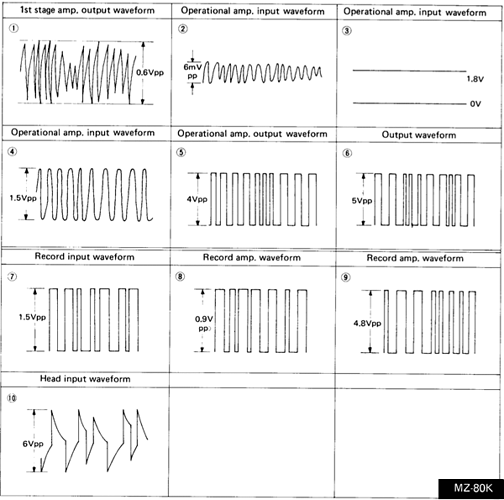So, for everyone interested (I guess, for the moment it’s more an intellectual exercise), here are the relevant parts of the Sharp MZ-80K service manual.
Turns out, the tape unit is connected handily by a cable with read, write, motor and sense wires, which should allow to tap into this. Some pragmatics are not documented, e.g., is the tape verified after write (I don’t think so – there’s no connection to rewind)? What does the sense signal sent back from the tape unit look like (this is for detecting button presses)?
Generally, there are two copies of the data written to tape and on read the computer will stop after the first copy, if there’s no error. Transfer speed is 1200 bits/sec, pulse width modulated (PWM).
Here are the general specs:
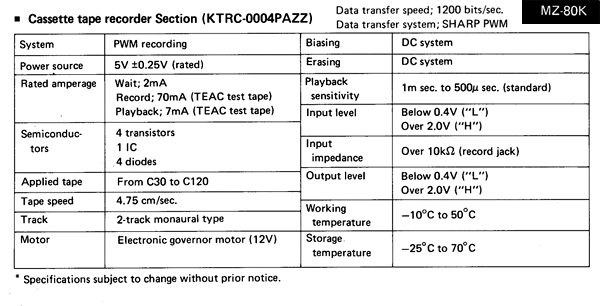
And this is the schematic on the CPU board side (mind the 4 signals):
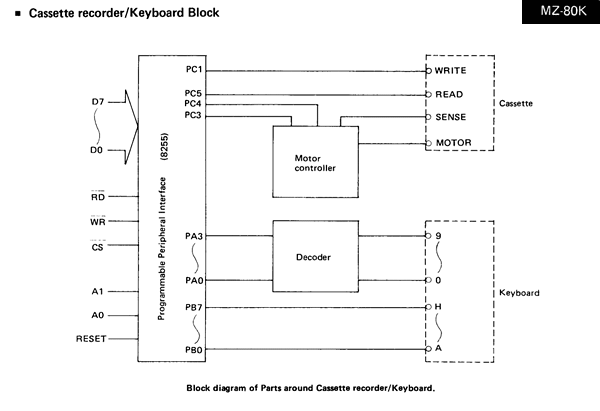
And this is the tape unit’s side of things, regarding the interface:
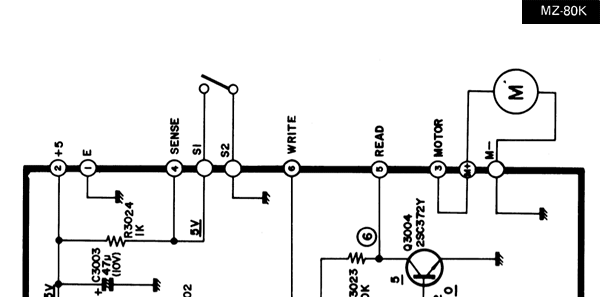
These are the waveforms for the various points (for tapping into this, we may be interested in 7 for write and 6 for read):
If we were trying to listen to the tape head, it’s all about waveform 10.
Finally, here’s what’s on the tape unit, a single amplification stage for recording and a 3 stage amplifier for playback (the waveforms on the left should be 6 and 7 as above), the sense signal is +5V:
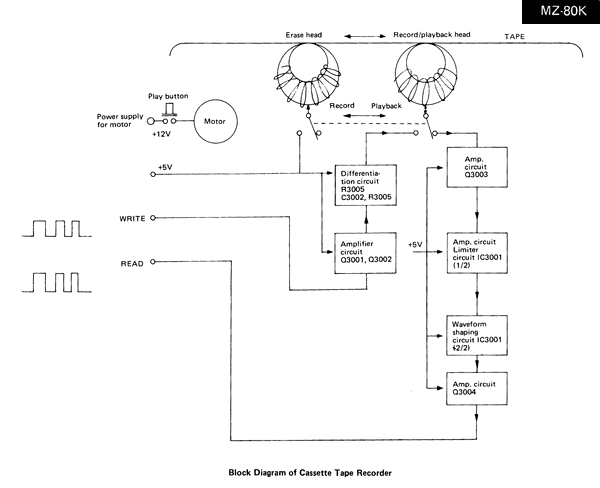
I guess, it should be possible to interface with this using an Arduino and connecting from there by normal serial to a PC/Mac. The interface would have to listen for the +12V motor signal and answer by the +5V sense signal (apparently, this is just continuously HI), from there, it’s serial by PWM square waves. (If I’m reading this right, 1.5V peak to peak for write and 5Vpp for read.)
Edit: It may be tempting to communicate just by serial, however, we’d still need to send normal audio for loading programs from WAV files. (Otherwise, we would have to write a decoder for this and then send the bits over serial.)
P.S.: Source, https://original.sharpmz.org/mz-80k/download/sm80k.pdf




